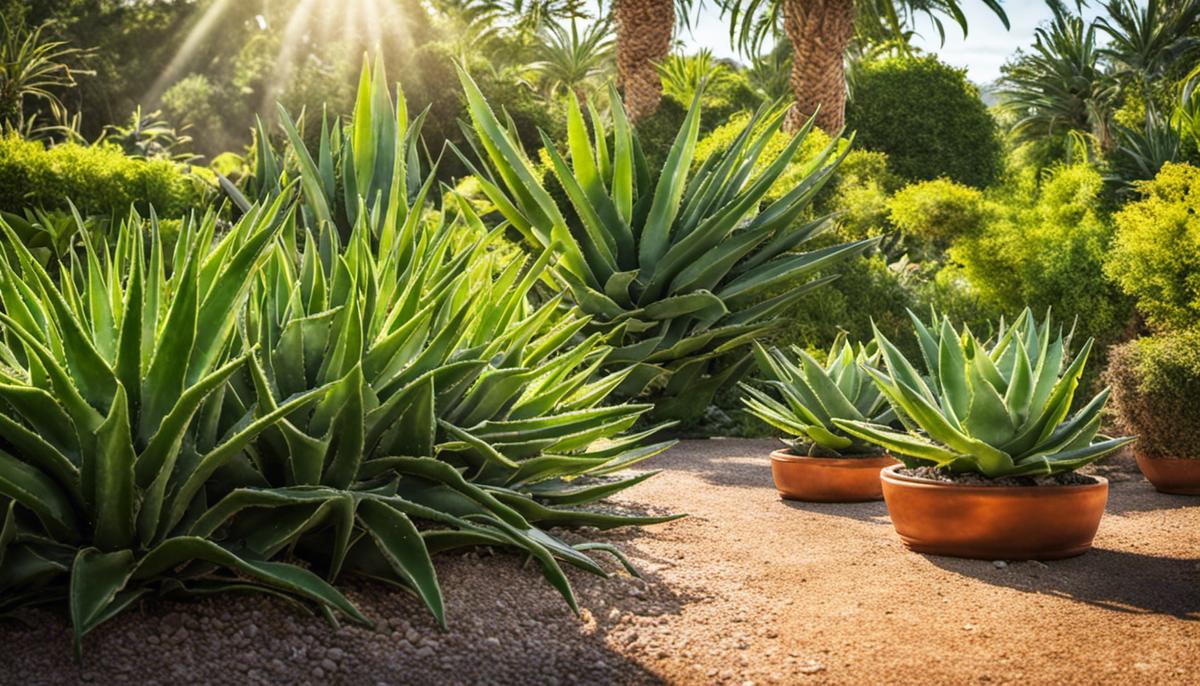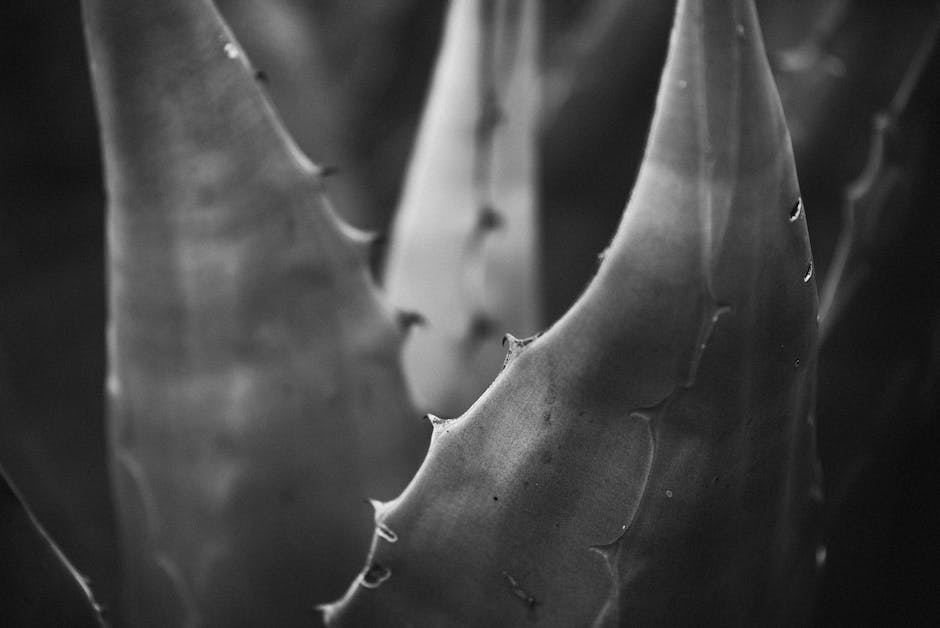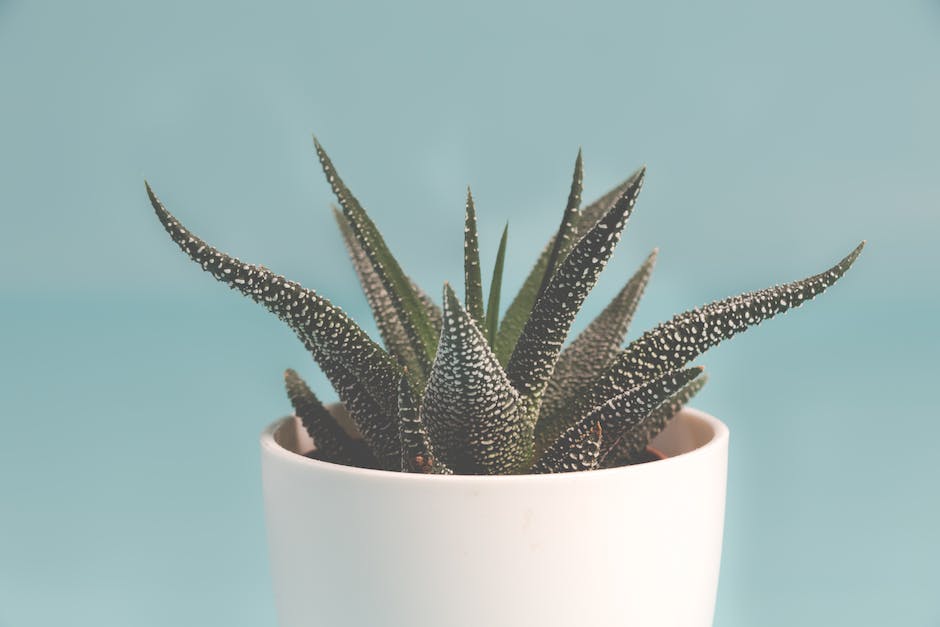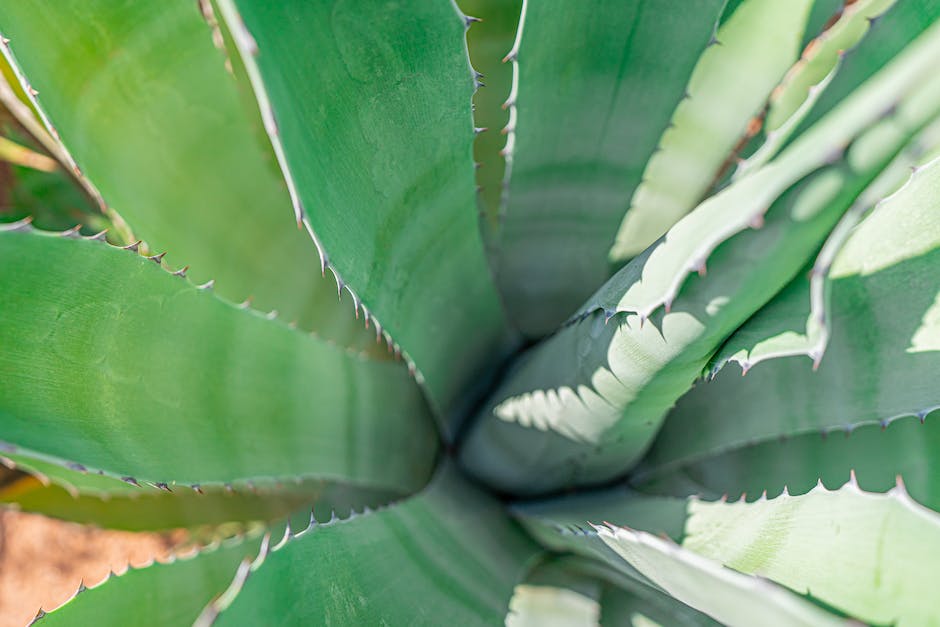How to Flourish Your Aloe Vera Plants

For those looking to add a touch of beauty and health benefits to their home, endeavoring to grow Aloe Vera plants can prove to be an exciting venture. Aloe Vera is a versatile and resilient succulent renowned for its medicinal properties and unique aesthetic appeal. This essay is aimed at empowering you with practical knowledge and insights into cultivating and nurturing this remarkable plant. We delve into details about choosing the perfect climate and environment that best suits this sunlight-loving flora, whether you are considering indoor or outdoor planting. As we proceed, we also explore the ideal watering and fertilizing techniques needed to keep your Aloe Vera thriving, as well as how to prune and repot the plant to maintain its healthy growth.
Choosing the Ideal Climate and Environment
Thriving Aloe Vera: Unlocking the secrets of Climate and Environment
As seasoned aloe vera enthusiasts, we know the ins and outs of how to cultivate this nature’s miracle. Yet, understanding a plant and its climatic preferences goes a long way in ensuring its optimal growth. Getting a grasp of the best climate and environment for aloe vera can be a real game-changer for our green endeavors!
Primarily, aloe vera hails from the arid regions of North-Eastern Africa. This gives a general idea that it prefers climates similar to its native land. And while it can withstand various conditions, it thrives specifically in zones 8-11 according to the USDA hardiness zone chart.
Aloe vera flourishes in a temperature range between 55 and 80 degrees Fahrenheit, making it adaptable to both indoor and outdoor growing. However, it’s crucial to remember that temperatures below 50 degrees can pose a threat to these plants. If one lives in regions with frosty winters, it’s wise to pot the aloe vera so it can be moved inside when the temperature drops.
Though aloe vera plants are quite hardy, they aren’t big fans of heavy rain or excessive moisture. Too much water, especially stagnant water, can lead to root rot – a common cause of an aloe vera plant’s demise. Thus, a dry, hot climate where rain is irregular is the best-suited for aloe vera.
As for sunlight, these desert beauties are total sun-lovers! Placing them somewhere they have access to full sun or light shade will keep them happy and growing. But keep in mind that too much direct, blistering sunlight could harm the plant, causing its leaves to turn brown. Remember, balance is key!
The type of soil also plays an integral role. Aloe vera favors sandy or rocky soil that drains swiftly. The use of cactus potting soil or a DIY mix of regular potting soil and perlite or building sand can help mimic the plant’s natural desert environment.
Crucially, environmental humidity plays a lesser-known yet significant role. Aloe vera prefers low-humidity environments, so it’s beneficial to place them in an area with good air circulation, preferably away from humidifiers or evaporative coolers.
In a nutshell, a sunny location, with well-draining soil, warm temperatures, and a dry atmosphere creates the perfect environment for aloe vera to thrive. So, regardless of being in the confines of a home or the boundless outdoors, if these parameters are met, the aloe vera plant will find a place to call its own! Cultivating aloe vera isn’t simply about planting and watering; it’s understanding the perfect blend of elements the plant loves.
Now that you have this knowledge in your repository, growing aloe vera will be an even more rewarding endeavor! So let’s get those green thumbs working and provide our aloe vera plants with an environment that feels just like home. Happy gardening!

Proper Watering and Fertilizing Techniques
Drumming on the nuances of Aloe Vera care, it becomes essential to inject light on two indispensable aspects: the frequency of watering and fertilizing. These elements form the fulcrum of the Aloe Vera’s health and robustness, demanding just the perfect balance, akin to that captivating symphony that relies on harmonious notes and timing.
As with any succulent, the Ducal diadem of watering rules clearly states: Less is More for Aloe Vera. Watering isn’t a daily affair for our fleshy friend! Recognizing the desert-born DNA of this plant, adapt your watering practice to match its rhythm. Hence, a thorough watering every 2-3 weeks during warm months and a stretched period of 4-5 weeks in the colder season is optimal. This Infrequency. is key to keep the roots’ environment moist but never soggy. Never let your Aloe swim! The drier the root environment, the happier your Aloe Vera.
To assure ideal watering, go with the ever-reliable ‘soak and dry’ method. Water thoroughly until it percolates through the drainage holes and then let it dry entirely before the next session. One more thing, keen hobbyists: make sure to use a pot with adequate drainage holes to prevent pooling. Remember, our Aloe is not an avid swimmer!
So, now you know how to quench the thirst of aloe vera, let’s dive into its feeding pattern. A master in self-sustenance, Aloe Vera’s needs for fertilization are minimal, very minimal. An annual supplement of slow-release granular fertilizer or a half-strength, phosphorus-heavy, water-soluble fertilizer, ideally 10–40–10, would suffice the nutrition-starvation of your Aloe during the growing season. However, our green champ enjoys some rest during the winter—the dormant period—so avoid playing the nutritionist then!
And there it is, all the ‘water and feed’ wisdom that your Aloe Vera silently pleads for. Apply these practices conscientiously, and your plant will flourish, adding a touch of tranquility and green panache to your space.
In the labyrinth of plant care, unfurling the perfect mix of watering and fertilizing enriches your cultivation experience. Immerse yourself in the sea of this soothing hobby as you gradually unveil the essence of aloe vera’s resilience and patient growth, becoming a master in your right. The horizon of plant nurturing has no boundaries, let the passionate pursuit of knowledge and experience guide you in unravelling its profound depths.

Pruning and Repotting Aloe Vera
Now, let’s bring our attention to a crucial aspect of Aloe vera care – pruning and repotting. Just like an artist sculpturing a masterpiece, these acts require equal parts skill, timing, and finesse. Largely known for their resilience, Aloe vera plants still occasionally need some grooming and possibly a new place to spread their roots.
Pruning an Aloe vera plant isn’t just a cosmetic exercise, it’s also a preventive measure against disease. Taking off older leaves allows the younger ones to soak up more sunlight, while the removal of dead or dying foliage prevents the onset of decay that might attract pests or introduce disease. It’s best done with a sharp and sterilized knife, scissors, or pruning shears for a clean cut which helps the plant recover faster.
Ideally, Aloe vera plants should be pruned only when necessary, typically when the plant becomes overcrowded or the leaves begin to show signs of damage or disease. But remember never to remove more than one-third of the plant at a time to avoid stressing it.
Now, onto repotting or as we like to call it – giving your Aloe vera a ‘new lease of life’! This process is usually necessary when the plant outgrows its current pot, or its soil starts to deplete of nutrient value. As a general rule of thumb, Aloe vera plants should be repotted every 2-3 years. The best time to do this is in the spring or early summer when the plant is coming out of its winter dormancy and is best prepared to handle the stress of moving.
To repot, first choose a container that’s at least 3-5 inches larger in diameter than the current one, gives ample room for root growth, and always make sure it has good draining facilities. Now, carefully extract your Aloe vera with the root ball intact, from its old home, tease the roots gently to set them free and place it in fresh potting mix, which is preferably a well-draining cacti or succulent blend. Ensure the newly potted plant is placed in a bright location, but not in immediate direct sunlight.
It bears repetition to clarify that this process is not a routine maintenance job, only to be done when necessary for the health and vibrancy of your plant. So, now your Aloe vera houseplant is set and ready to continue gracing your living space with its elegant and healing presence. Let’s promise to give it the care and attention it deserves and watch in awe as it thrives. Happy gardening!

As we’ve unearthed, growing Aloe Vera plants can be an incredibly gratifying experience with the right approach and commitment. Understanding the plant’s preference for a warm and sunny environment, adopting an optimal watering routine and appropriate fertilizing techniques, along with mastering the art of pruning and repotting, you are well-equipped to cultivate a robust Aloe Vera plant. So, whether you’re an experienced green thumb or stepping into the gardening aficionado’s shoes, the joy of watching your Aloe Vera plant flourish, reflects the beauty of your endeavor and the botanical cosmos’s miracles. Keep nurturing and basking in the therapeutic aura of your aloe, and may your green space be filled with many flourishing Aloe Vera plants.



